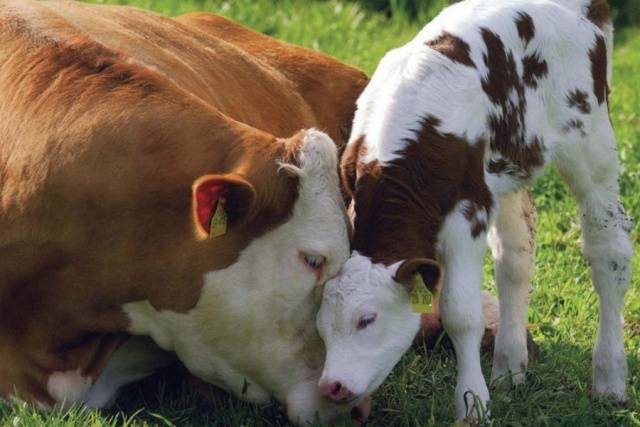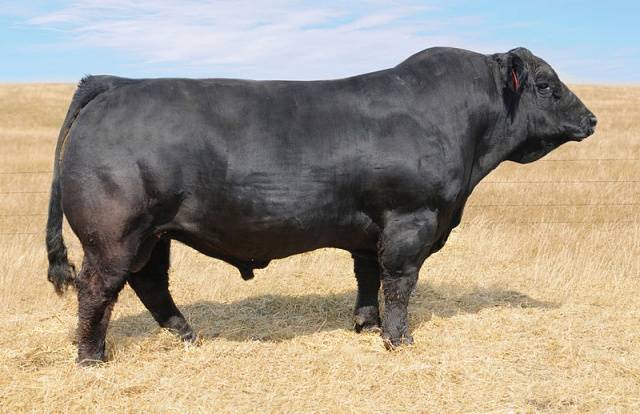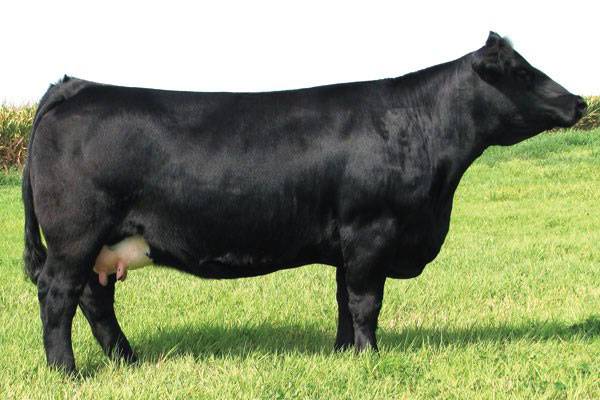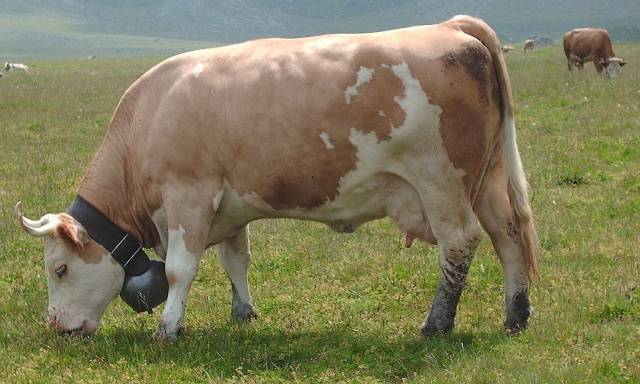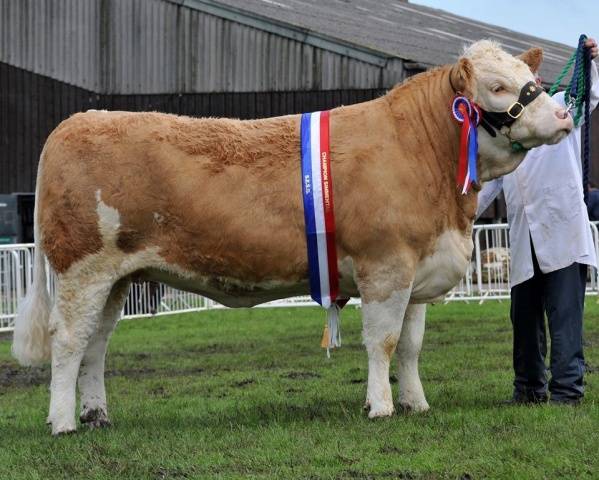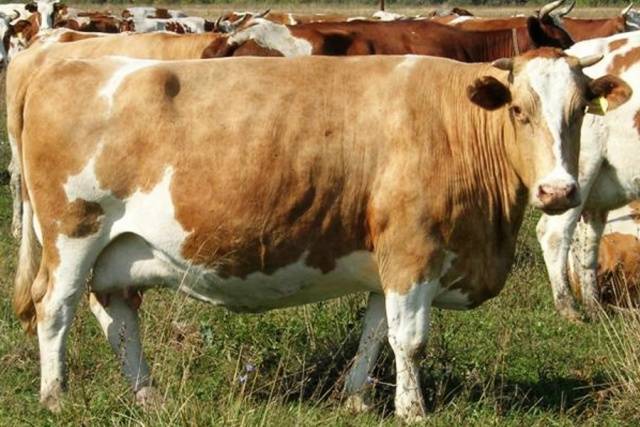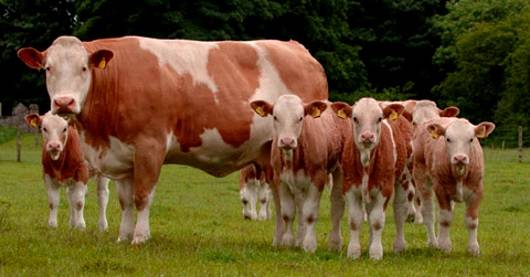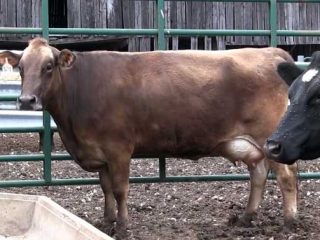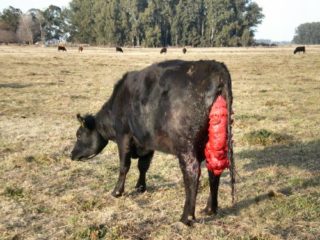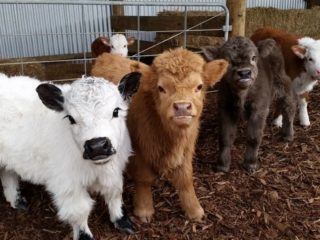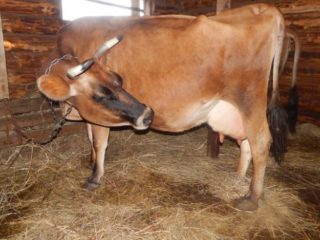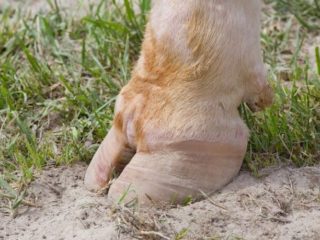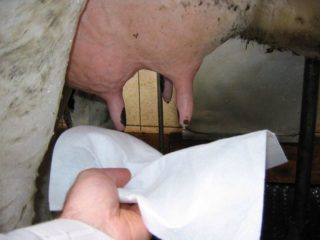Content
One of the ancient breeds of the universal direction, so to speak about cows. The origin of the breed is still controversial. It is only clear that she is not a native of the Swiss Alps. Brought to Switzerland in the 5th century AD, the Simmental breed of cows was used there as draft animals, as well as for milk and meat production. Work with the Simmental breed was carried out until the 20th century.
Considering that one of the main sources of income for Switzerland was the production and sale of cheese, a Simmental cow should have produced a decent amount of milk. At the same time, she had to have great endurance in order to make transitions to mountain pastures. And for long transitions you need strong muscles. Therefore, the development of the breed along the path of the combined direction proceeded spontaneously. There was no particular goal of getting meat from the simmentals. The Simmental breed was obtained by the method of folk selection, when cows were driven into the mountains to pastures, and bulls were harnessed to carts as a draft force.
The productive qualities of the breed were noticed in other countries. After the export of the Simmental breed outside Switzerland, numerous types of Simmental breed arose around the world. Only in the USSR, crossing with Simmental bulls gave 6 meat and dairy types of cattle:
- steppe simmental: Russian cattle + Simmental bulls;
- Ukrainian Simmental: gray steppe cattle + Simmental bulls;
- Volga Simmental: Kalmyk and Kazakh cattle + Simmental bulls;
- Ural Simmental: Siberian and Kazakh cattle + Simmental bulls;
- Siberian Simmental: Siberian and Buryat cattle + Simmental bulls;
- Far Eastern simmental: Transbaikal and Yakut cattle + Simmental bulls.
In the USSR, Simmentals played a significant role in cattle breeding. A quarter of the total number of cattle was the so-called Russian simmental or "Simmental cow".
In other countries, the Simmental breed developed in its own directions. And in the United States, even a black variety of Simmentals appeared.
Description of the Simmental cow breed
The main direction of the Simmental breed today is milk and meat production. The simmental type is more meat than dairy. The Simmental cattle is not tall, but due to its massive body it seems very large. The height at the withers in Simmentals is 136 - 148 cm with an oblique body length of 160 - 165 cm. The chest is wide, deep, with a well-developed dewlap. The back is straight and wide. The withers are poorly expressed, smoothly transforms into a powerful nape. The neck is short, with well developed muscles, giving the impression of a hump in bulls. The head is small. The length of the head is equal to the thickness of the neck from the upper crest to the larynx. The loin and sacrum are straight and wide. The tail is powerful. Legs are short, powerful, well set. The udder of cows is small, rounded.
The classic colors of the Simmentals are red and red piebald. The red color options range from light red to brown. Piebald spots can also be very small or cover almost the entire body, leaving only minor areas of the main color.
In the photo there is an English type of bull-simmental.
Bulls mature at 5 years old. Until that moment, they can be "affectionate calves", and then become real killers.If the bull is left to the tribe, the ring in the nasal septum becomes a mandatory attribute for him. This is the only way to stop the bull, who has decided to figure out who is the head of the herd.
Exterior defects
Saggy back, narrow chest. Incorrect positioning of the hind legs. Poor development of the front lobes of the udder compared to the hind ones. "Fatty" udder.
Productive characteristics
The spread of weight in this breed is quite large. An adult simmental can weigh from 550 to 900 kg, a bull - from 850 to 1300. It depends on the direction in which the selection of a particular population of simmentals was carried out. Newborn calves weigh between 35 and 45 kg. They respond well to fattening and by 6 months the live weight of the calf is already 180 - 230 kg. In a year, the difference between a heifer and a bull is more than 100 kg. One-year-old calves weigh between 230 and 350 kg. With competent fattening, the average daily weight gain is 0.85 - 1.1 kg per day. In the year, bulls and rejected heifers are sent for slaughter.
A series of videos of fattening bulls from 21 days to 2 months
21 - 26 days
26 - 41 days
41 days - 2 months
Simmentals cannot boast of large milk yield. On average, a cow gives 3.5 to 5 tons of milk per year. With good milk yield, it can give up to 6 tons. How much milk can be obtained from an animal depends on the milk yield of the parents, the quality of the feed and the diligence of the owners when milk is made.
The fat content of milk in simmentals can be up to 6%. But usually it is within 4%.
But it seems that today, in the presence of other dairy breeds, Simmentals began to reorient exclusively to the meat type and the question "how much milk can you get from the Simmental" is no longer relevant.
Simmental cattle breed (new type)
Pros and cons of the breed
The advantages include high productivity in the meat and dairy sector. Moreover, milk production directly depends on the muscle mass of the cow. Accordingly, the greater the muscle mass of the cow, the higher its milk yield. Good response to feeds with fast gain of live weight. Excellent meat quality, low fat content. The ability to use a Simmental bull as a pulling force could also be attributed to advantages, if today someone needed it.
Milk productivity, which directly depends on the quality of feed, already belongs to the disadvantages of the breed. As well as frequent problems at first calving, since the calf is born large and can weigh 50 kg.
Reviews of farmers about the breed
Conclusion
The Simmental breed of cows is ideal for private traders who want to get their own meat and milk. Although the amount of milk that a cow gives per day is not very large, but soon even chickens and pigs will get some of the milk. At the same time, there will always be dairy products in the house.
